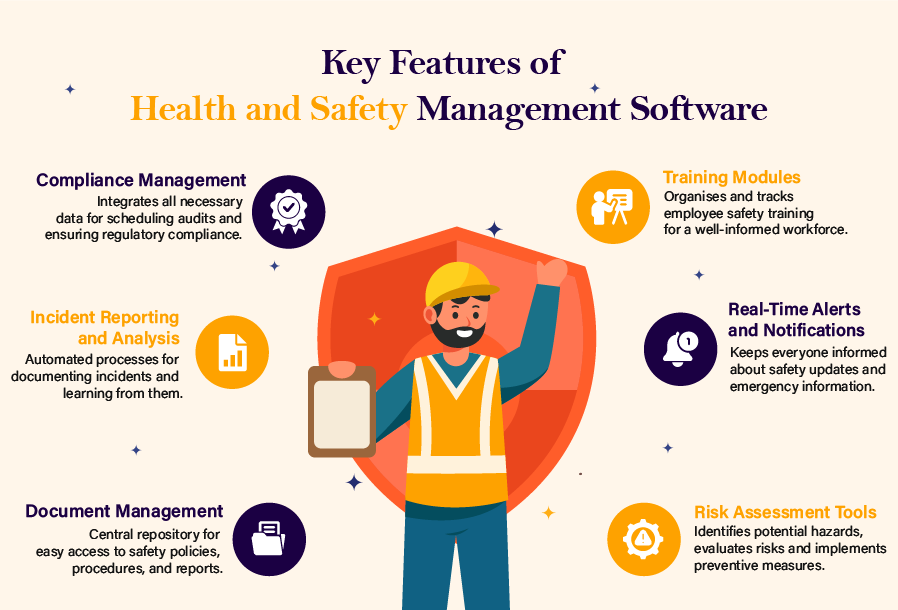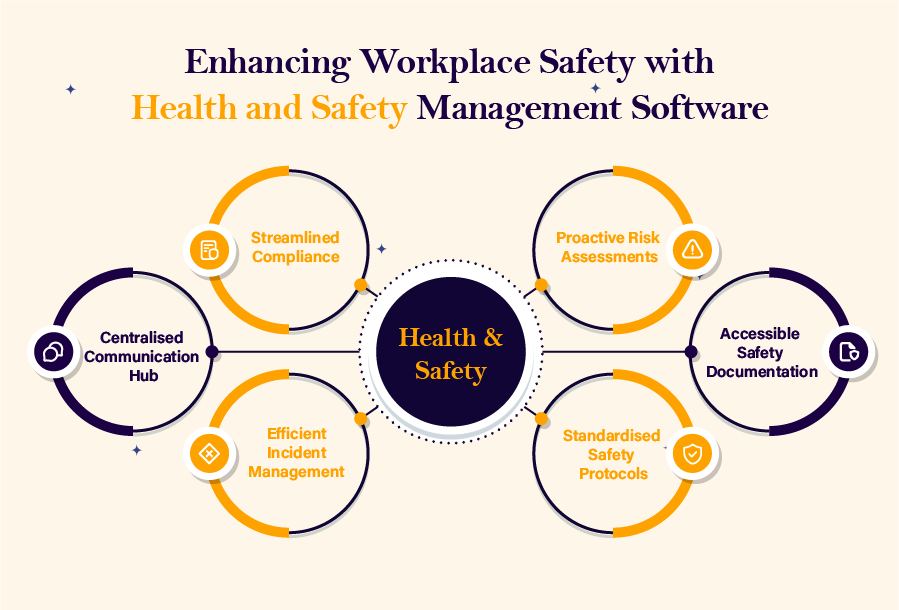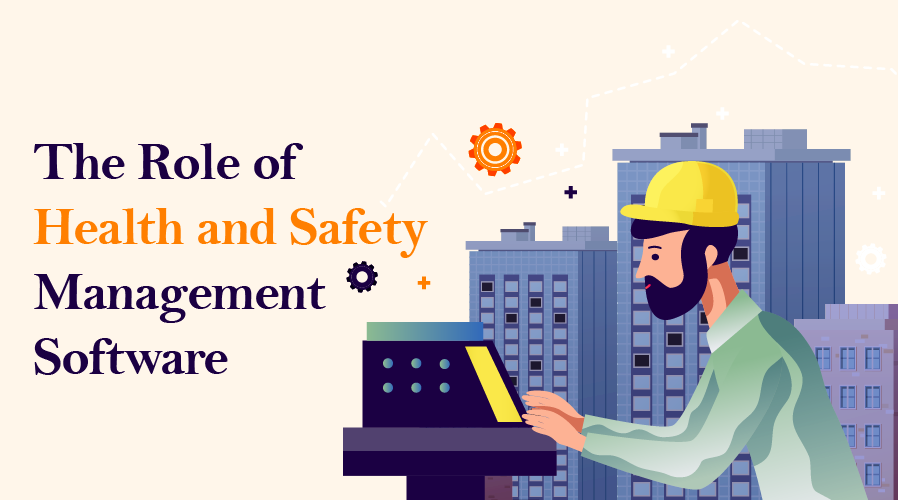We work best and are at our most productive when we feel safe and protected in our work environment. The top priority for any organisation is to ensure that employees are able to work productively and efficiently. This can be achieved only by creating a safe and healthy working environment.
Creating safe work spaces involves establishing guidelines and protocols that must be followed stringently. Safety requirements in the workplace are also legally mandated and must be followed to remain compliant with standards and regulations.
An occupational health and safety management system has many components that help your organisation move towards managing worker safety. A safety management software automates processes involved in a health and safety management system allowing you to ensure compliance with regulations while making your workplace safer for employees.
What is a Health and Safety Management Software?
A health and safety management software is a digital tool that helps you with implementing your safety management system. Every business organisation needs a safety management system in place. This system is a framework that consists of all the processes, actions, responsibilities, risk factors, hazards and protocols to manage safety incidents. This framework is informed by your organisational goals as well as standards and regulations such as the ISO 45001 and ISO 18001.
Implementing a safety management system can be time consuming as it requires a significant amount of paperwork, time and resources. Also manually managing the safety system can lead to errors and inefficiencies. This is where worker safety software can help by automating the entire process and making all the safety related information and updates available digitally.
Role of a Health and Safety Management Software

1. Compliance Management
Business organisations are always regulated by authorities and there are many laws and standards in place to ensure that an organisation maintains quality, integrity and safety. The well-being of employees is not just your organisation's concern but also a focus area for the government and other regulatory bodies. This is why your organisation must comply with safety standards and rules.
A safety software contains all the data necessary for you to manage health and safety in your organisation. This includes documentations, incident reports, protocols, lists of persons responsible and more. With this data, the software automates all the processes in HSE management such as scheduling audits, communicating findings, and implementing safety checks. These processes are part of standard requirements and the software allows your organisation to ensure compliance.
2. Incident Management
Workplaces can be unpredictable and sometimes safety and health related incidents may occur. When incidents do occur, if you have a safety management system in place, your employees and stakeholders in your organisation will know how to handle the situation.
The safety management solutions software automates the process of incident management. It automates incident reports, notifies responsible team members regarding steps for resolutions, tracks management in real-time and records lessons learned after each incident.
3. Improved Communication
The backbone of a successful health and safety management program is effective communication between the members of your team. Health and Safety Management Software is a centralised platform that makes safety-related communication quicker and more efficient.
The worker safety software ensures that all messages related to health and safety policies, updates, and incidents are shared organisation-wide quickly so that all parties are informed. The software includes features like automated email notifications, real-time alerts and bulletin boards so that all employees are aware of safety procedures, policy changes and potential safety hazards.
This system allows your workplace to be proactive and reduces the risk of unsafe conditions and practices.
4. Healthier and Safer Environment

Safety management systems software manages health and safety processes in your workplace to ensure that your organisation provides a healthy and safe environment to its employees. The software facilitates regular risk assessments, monitors the implementation of safety measures and ensures all equipment is safe and well-maintained.
The safety software also identifies recurring issues, training needs, gaps in safety plans and potential hazards. This helps reduce the chances of accidents in your workplace and boosts the productivity and morale of employees.
5. Consistent Processes
Effective health and safety management comes from consistent mitigation of risks and ensuring compliance. The safety management software automates and standardised safety processes across your organisation. Automations helps get rid of human errors and mistakes. It ensures that all safety procedures are carried out uniformly and in accordance with the latest regulations and policies.
The software also manages regular reminders for audits, assessments and training. This maintains a consistent level of safety in the organisation at all times. Consistency is also part of most ISO standards, which makes the software central to ensuring your organisation’s compliance.
6. Centralised Repository
Lastly, the software acts as a central repository for all health and safety data, records and documentation. This may include policy documents, procedures, incident reports, audit results and training documents. The software makes all of these available on a single platform.
The worker safety software improves the accessibility of documentation within your organisation. This simplifies the process of managing health and safety requirements. Access to data also allows for easier identification of trends and areas of improvement. Using these insights you will be able to make informed and data-driven decisions to implement health and safety management systems in your workplace.
In conclusion
Health and Safety Management software helps you transform the way your organisation approaches workplace safety. It automates all the processes essential for compliance and incident management and sets in place standard practices. These practices help you adhere to legal standards and requirements and also reduce the potential for human error.
Additionally, having a safety software improves the communication between team members, creates a safer work environment, and makes data and documentation more accessible. When selecting a safety software for your organisation, select one that is user-friendly and intuitive. This ensures that all your employees will be able to use it without complication. Also, look for a software that integrates well with the digital systems already in place and ensure that the software can be customised to meet your specific needs.
With the right safety management software your organisation can meet high safety standards effortlessly.






























